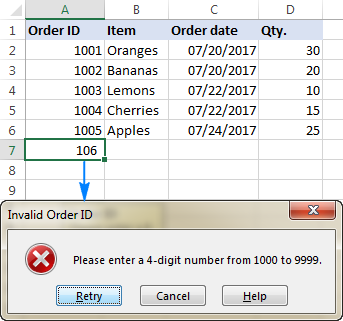The smart Trick of Excel Links Not Working That Nobody is Discussing
Table of ContentsGetting The Excel Links Not Working To WorkHow Excel Links Not Working can Save You Time, Stress, and Money.The Only Guide for Excel Links Not WorkingNot known Details About Excel Links Not Working Excel Links Not Working Things To Know Before You Get This

However, array computation functions like either can not handle entire column references or compute all the cells in the column. User-defined functions don't automatically acknowledge the last-used row in the column as well as, for that reason, regularly calculate whole column references inefficiently. Nonetheless, it is simple to program user-defined functions so that they identify the last-used row (excel links not working).

Excel Links Not Working Things To Know Before You Get This
Utilizing the formula for a dynamic range is normally better to the formula due to the fact that has the drawback of being an unpredictable function that will be computed at every recalculation. Efficiency decreases since the feature inside the vibrant variety formula must take a look at several rows. You can reduce this efficiency decrease by storing the part of the formula in a different cell or defined name, and after that describing the cell or name in the vibrant array: Counts!z1=COUNTA(Sheet1!$A:$A) Offset, Dynamic, Variety=OFFSET(Sheet1!$A$ 1,0,0, Counts!$Z$ 1,1) Index, Dynamic, Range=Sheet1!$A$ 1: INDEX(Sheet1!$A:$A, Counts!$Z$ 1+ROW(Sheet1!$A$ 1) - 1,1) You can likewise make use of features such as to build vibrant arrays, but is unpredictable and always determines single-threaded.
Making use of multiple dynamic ranges within a single column calls for special-purpose counting functions. Using many dynamic ranges can decrease efficiency. In Office 365 version 1809 and later on, Excel's VLOOKUP, HLOOKUP, as well as suit for specific match on unsorted data is much faster than in the past when seeking out multiple columns (or rows with HLOOKUP) from the exact same table range.
Fortunately, there are numerous means of boosting lookup estimation time - excel links not working. If you use the exact suit choice, the calculation time for the function is proportional to the variety of cells scanned prior to a match is found. For lookups over large arrays, this moment can be considerable. Lookup time making use of the approximate suit options of,, and also on sorted data is fast and also is not dramatically raised by the size of the variety you are looking up.
The 9-Minute Rule for Excel Links Not Working
Make sure that you recognize the match-type and range-lookup alternatives in,, and try this also. The following code example shows the syntax for the function. MATCH(lookup worth, lookup array, matchtype) returns the largest match less than or equal to the lookup worth when the lookup range is sorted ascending (approximate match).
The default option is approximate suit arranged rising. The following code example reveals the syntax for the as well as features.
VLOOKUP(lookup worth, table range, col index num, range-lookup) HLOOKUP(lookup worth, table variety, row index num, range-lookup) returns the biggest suit much less than or equal to the lookup worth (approximate suit). Table range must be arranged ascending.
The 10-Second Trick For Excel Links Not Working
If your data is sorted, but you desire an exact match, see Use two lookups for sorted information with missing out on values. Try making use of the and functions rather than. Is somewhat much faster (approximately 5 percent faster), easier, and also utilizes much less memory than a combination of and, or, the additional versatility that and also deal typically allows you to substantially conserve time.
The function is rapid and also is a non-volatile function, which speeds up recalculation. The function is likewise fast; however, it is a volatile feature, and also it sometimes considerably enhances the time taken to refine the computation chain.$A$ 2:$F$ 1000, MATCH(A1,$A$ 1:$A$ 1000,0),3) Because exact suit lookups can be slow-moving, take into consideration the complying with options for boosting performance: Use one worksheet.
When you can, the data initially (is quick), and also make use of approximate match. When check over here you must make use of a precise match lookup, limit the variety of cells to be scanned to a minimum. Usage tables and structured references or vibrant range names as opposed to referring to a multitude of rows or columns.
How Excel Links Not Working can Save You Time, Stress, and Money.
Two approximate suits are considerably faster than one exact match for a lookup over greater than a few rows. (The breakeven point has to do with 10-20 rows.) If hop over to here you can sort your information yet still can not use approximate match because you can not be certain that the worth you are seeking out exists in the lookup array, you can utilize this formula: IF(VLOOKUP(lookup_val, lookup_array,1, True)=lookup_val, _ VLOOKUP(lookup_val, lookup_array, column, True), "notexist") The very first component of the formula works by doing an approximate lookup on the lookup column itself.
VLOOKUP(lookup_val, lookup_array, column, True) If the solution from the lookup column did not match the lookup worth, you have an absent worth, and the formula returns "notexist". Understand that if you seek out a value smaller sized than the smallest value in the checklist, you obtain a mistake. You can handle this error by utilizing, or by including a small examination worth to the checklist.
Beginning with Excel 2007, you can use the feature, which is both basic as well as rapid. IF IFERROR(VLOOKUP(lookupval, table, 2 FALSE),0) In earlier versions, a basic however sluggish method is to use a feature which contains 2 lookups. IF(ISNA(VLOOKUP(lookupval, table,2, FALSE)),0, _ VLOOKUP(lookupval, table,2, FALSE)) You can prevent the dual specific lookup if you use specific when, keep the cause a cell, and afterwards evaluate the outcome prior to doing an.